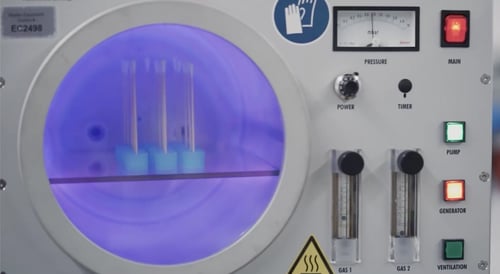When a surface undergoes
plasma treatment, it gains “surface energy.” This process is called
surface activation and this increases a surfaces adherence capability, meaning paint and glues will stick more effectively. The quickest and easiest way to measure
surface energy is by using
dyne tests. Dyne tests come in kits that contain droppers or pens with liquids that have a range of surface energy. If the liquid beads up right away, this means the surface energy is less than that of the liquid. By conducting multiple
dyne tests you can determine an accurate range for how much surface energy a material has. With that knowledge you can evaluate that surface’s adhesion potential.
More about Dyne Testing
Dyne tests measure surface wettability or adhesion. Dyne is used as a unit of force in the milli-newton per meter system of units. When using
dyne tests you are capable of
measuring surface tension in the units millinewtons per meter or dyne per centimeter. There are other ways to calculate a surface’s adhesion properties other than a dyne test, such as
contact angle, but this requires expensive equipment.
Dyne tests are a very simple, inexpensive and accurate approach to evaluating the level of activation a surface has undergone.

